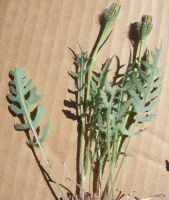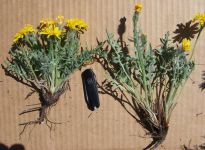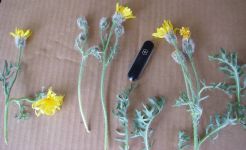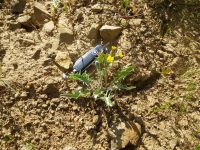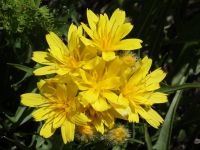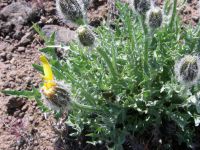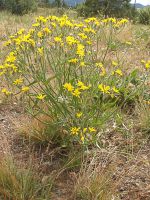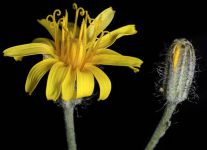Distribution: Occurring east of the Cascades crest in Washington; central British Columbia to California, east to Montana, Wyoming, and Colorado.
Habitat: Common in shrub-steppe, sagebrush, and conifer forest openings.
Flowers: May-July
Origin: Native
Growth Duration: Perennial
Conservation Status: Review Group 2 in Washington (WANHP)
Pollination: Bumblebees, bees, butterflies, flies, beetles, wasps, apomixis?
Perennial with 1-4 stems from a tap-root, 1-3 dm. tall, the juice milky; herbage white-woolly throughout, at least when young, and the lower stem with bristles, but not glands.
Basal and lower cauline leaves 0.7-2.5 dm. long, deeply pinnatifid, with lanceolate, toothed or again pinnatifid segments, the teeth with a thick, sharp point.
Heads 1-9, 10-60 flowered; involucre 11-16 mm. high, finely grey-woolly and covered with glandless bristles; long inner involucre bracts usually 13; corollas all ligulate, yellow.
Achenes greenish-black to deep reddish-brown, longer than the pappus.
Publication: Erythea. 3: 48. 1895.
Crepis modocensis Greene ssp. modocensis [FNA19, HC]
Crepis modocensis Greene ssp. rostrata (Coville) Babc. & Stebbins [FNA19, HC]
Crepis modocensis Greene ssp. subacaulis (Kellogg) Babc. & Stebbins [FNA19]
Crepis rostrata Coville
PNW Herbaria: Specimen records of Crepis modocensis in the Consortium of Pacific Northwest Herbaria database
WA Flora Checklist: Crepis modocensis checklist entry
OregonFlora: Crepis modocensis information
E-Flora BC: Crepis modocensis atlas page
CalPhotos: Crepis modocensis photos











